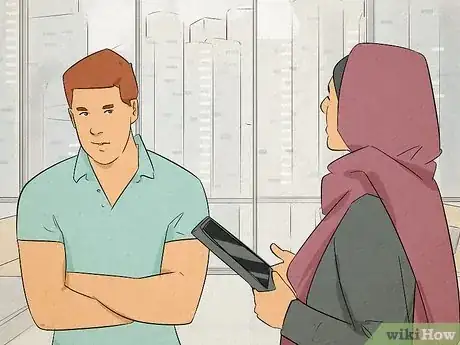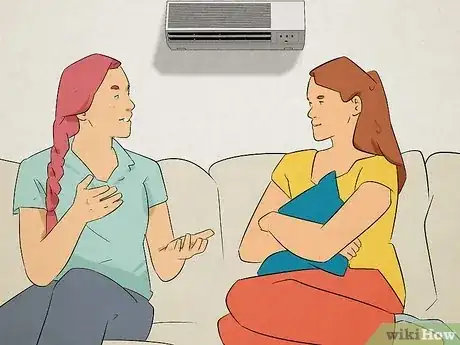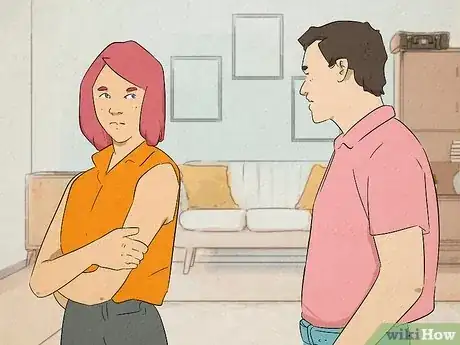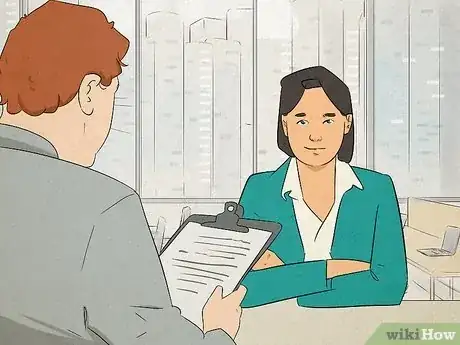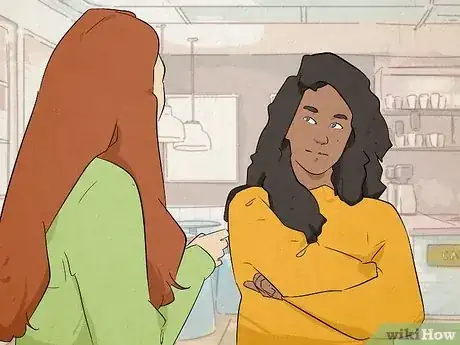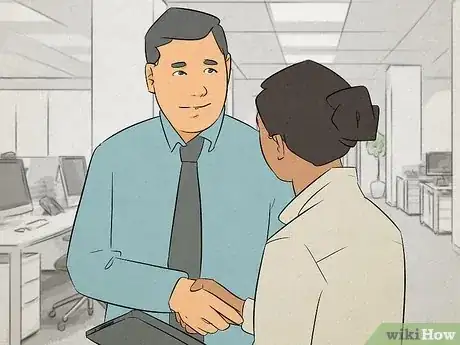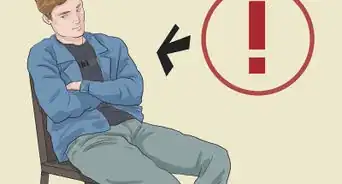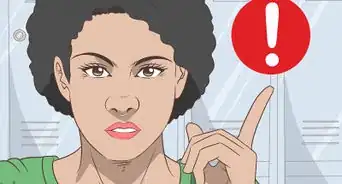This article was co-authored by Kelli Miller, LCSW, MSW and by wikiHow staff writer, Dev Murphy. Kelli Miller is a Psychotherapist, Author, and TV/radio host based in Los Angeles, California. Kelli is currently in private practice and specializes in individual and couples' relationships, depression, anxiety, sexuality, communication, parenting, and more. Kelli also facilitates groups for those struggling with alcohol and drug addiction as well as anger management groups. As an author, she received a Next Generation Indie Book Award for her book "Thriving with ADHD: A Workbook for Kids" and also wrote "Professor Kelli's Guide to Finding a Husband". Kelli was a host on LA Talk Radio, a relationship expert for The Examiner, and speaks globally. You can also see her work on YouTube: https://www.youtube.com/user/kellibmiller, Instagram @kellimillertherapy, and her website: www.kellimillertherapy.com. She received her MSW (Masters of Social Work) from the University of Pennsylvania and a BA in Sociology/Health from the University of Florida.
There are 10 references cited in this article, which can be found at the bottom of the page.
This article has been viewed 1,721 times.
From crossed arms to furrowed brows, the majority of our communication is nonverbal, which means that knowing how to interpret body language is essential to fully comprehending what someone is trying to say. But when it comes to crossed arms, a popular form of body language, how do we interpret them? Do crossed arms mean someone is angry? Afraid? Closed off? There’s more than one way to interpret crossed arms: we’ve compiled a list of them all, below.
Things You Should Know
- Crossed arms may make you come off as rude, angry, or resistant.
- Someone may cross their arms when they are insecure, anxious, or stressed.
- People may also cross their arms for practical purposes, such as to stay warm if they are chilly, or to support their shoulders if they're sitting in an armless chair.
Steps
References
- ↑ https://westsidetoastmasters.com/resources/book_of_body_language/chap4.html
- ↑ https://www.businessinsider.com/meeting-body-language-mistakes-2016-3#-1
- ↑ https://atlanticrecruiters.com/body-language-tips-to-nail-your-job-interview/
- ↑ https://www.businessinsider.com/meeting-body-language-mistakes-2016-3#-1
- ↑ https://www.helpguide.org/articles/relationships-communication/nonverbal-communication.htm
- ↑ https://www.helpguide.org/articles/relationships-communication/nonverbal-communication.htm
- ↑ https://www.helpguide.org/articles/relationships-communication/nonverbal-communication.htm
- ↑ https://www.helpguide.org/articles/relationships-communication/nonverbal-communication.htm
- ↑ https://online.utpb.edu/about-us/articles/communication/how-much-of-communication-is-nonverbal/
- ↑ https://online.utpb.edu/about-us/articles/communication/how-much-of-communication-is-nonverbal/
- ↑ https://www.psychologytoday.com/us/basics/body-language
- ↑ https://www.helpguide.org/articles/relationships-communication/nonverbal-communication.htm
- ↑ https://careerdesign.champlain.edu/resources/7-body-language-tricks-to-crush-your-next-interview/
- ↑ https://careerdesign.champlain.edu/resources/7-body-language-tricks-to-crush-your-next-interview/
- ↑ https://careerdesign.champlain.edu/resources/7-body-language-tricks-to-crush-your-next-interview/
- ↑ https://www.scienceofpeople.com/handshake/
- ↑ https://www.sclhealth.org/blog/2019/06/the-real-health-benefits-of-smiling-and-laughing/
- ↑ https://www.helpguide.org/articles/relationships-communication/nonverbal-communication.htm
- ↑ https://www.huffpost.com/entry/body-language-signs-first-date_n_5c42108ee4b027c3bbc18038

